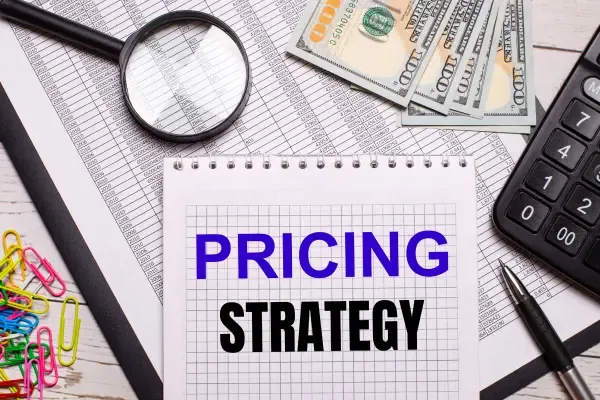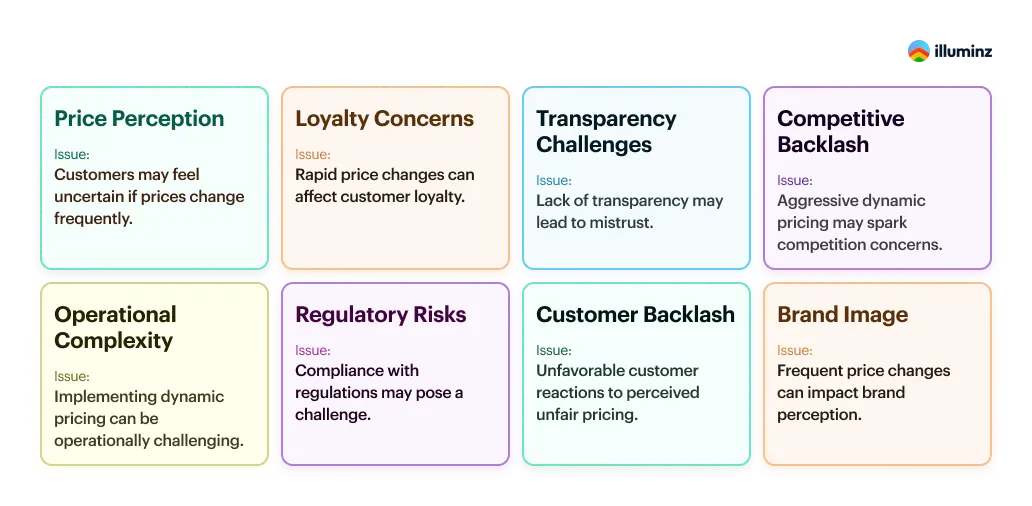Have you ever noticed that the cost of an item online can change when you check it again?
It seems like prices have a mind of their own. This phenomenon is due to something known as dynamic pricing.

In this article, we'll explore the ins and outs of dynamic pricing in e-commerce. This significant shift is revolutionizing the way we shop. We'll discuss why fluctuating prices are important, how retailers implement this strategy, and offer tips on how to navigate away from the old fixed prices.
Are you excited for a quick glimpse into the future of shopping? Let's dive in and bid farewell to the days of static pricing!
What is Dynamic Pricing?
Dynamic pricing, also known as flexible or demand pricing, is like a smart strategy that adjusts how much things cost based on what's happening right now in the market.
Think of it as a way for businesses to stay flexible with their prices, unlike the fixed prices that stick around for a long time (that's static pricing).

This strategy is super handy, especially in the online shopping world.
Why?
Online stores have lots of data, and with dynamic pricing, they can quickly change prices to match what people want and how much of it is available.
It's like a secret weapon for online shops to stay on their toes and give you the best deals.
The Benefits of Dynamic Pricing in E-commerce
Implementing dynamic pricing strategies in your e-commerce business can offer several advantages. Let's explore some of the key benefits:
- Maximizing Profits: Dynamic pricing in e-commerce maximizes profits by adjusting prices based on demand. It raises prices during high demand and lowers them in slower periods to boost sales.
- Flexibility and Adaptability: Automated pricing tools allow quick adjustments to factors like stock levels, shipping costs, or competitor pricing, keeping businesses competitive and profitable.
- Deeper Market Insights: Dynamic pricing is like having a market radar for businesses. It helps them understand what competitors are doing and what customers want right now. With this info, businesses can make smart pricing choices and stay ahead of the competition.
Real Scenario:
Imagine your favorite ice cream truck at the park. When the sun is blazing and everyone craves a cone, they may bump up the prices a bit.
Yet, when the weather cools and fewer folks are lining up, they might just scoop out some tempting discounts to lure you in.
Dynamic pricing in e-commerce is like that smart ice cream vendor, adapting to the temperature of demand to make sure you get the sweetest deal possible.
Real Scenario:
Think about selling lemonade. Automated pricing is like changing your lemonade price depending on how many lemons you have, the cost of cups, or what the other lemonade stands charge. It helps you stay competitive and make more money.
Real Scenario:
Imagine you're at a lively farmer's market. By watching what prices others set and seeing what people buy, it's like being a detective and learning what everyone wants. This helps you decide on prices and stay ahead of the competition.
10 Types of Dynamic Pricing Strategies
Dynamic pricing is not a one-size-fits-all strategy. Different types of dynamic pricing strategies can be applied based on the specific needs and goals of a business. Let's explore some of the commonly used 10 strategies:
1: Time-based Pricing:
What it is: Prices change based on the time of day, week, or season.
Example: Movie tickets being cheaper for matinees or hotels charging more during peak vacation times.
2: Demand-based Pricing:
What it is: Prices fluctuate based on the level of demand for a product or service.
Example: Ride-sharing services charge more during busy hours or airlines adjust ticket prices based on demand.
3: Event-based Pricing:
What it is: Prices change in response to specific events, promotions, or sales.
Example: Discounts on Black Friday or special offers during a store's anniversary.
4: Segmented Pricing:
What it is: Different customer segments see different prices for the same product or service.
Example: Student discounts, loyalty program offers, or special rates for seniors.
5: Penetration Pricing:
What it is: Setting lower initial prices to gain a foothold in the market.
Example: New tech products were priced lower when first launched.
6: Competitive Pricing:
What it is: Prices are adjusted to match or beat competitors.
Example: Online retailers adjust prices to stay competitive with similar products.
7: Bundle Pricing:
What it is: Offering discounts when customers buy a combination of products or services.
Example: Buying a phone and a data plan together for a lower overall price.
8: Location-based Pricing:
What it is: Prices change based on the customer's location.
Example: Ticket prices for events are different in various cities.
9: Peak Pricing:
What it is: Prices increase during peak demand periods.
Example: Ride-sharing services charge more during rush hours or at special events.
10: AI-Powered Dynamic Pricing:
What it is: Prices are adjusted using artificial intelligence algorithms analyzing various data points.
Example: Online retailers using AI to optimize prices based on customer behavior, competitor pricing, and market trends.
These strategies help businesses adapt to different situations, making sure prices align with what customers are willing to pay and maximizing overall success.
Implementing Dynamic Pricing Strategies
Implementing dynamic pricing strategies effectively requires the right tools and processes. Here are some key steps to consider:
- Data Collection: Gather information about customer behavior, competitor prices, and market trends. It's like taking notes on what everyone is doing.
- Define Goals: Decide what you want to achieve with dynamic pricing. Is it to maximize profits, clear out inventory, or stay competitive? Set clear goals, like making a game plan.
- Choose the Right dynamic pricing e-commerce software: Pick dynamic pricing ecommerce software tools like Prisync, Wiser, Zilliant, Repricer, Price2Spy, etc that can analyze all the collected data quickly. Think of it as your pricing superhero that does the math for you.
- Identify Price Drivers: Figure out what factors affect your prices the most. It could be the time of day, customer demand, or even external events. These are like the keys that unlock your pricing changes.
- Segment Your Audience: Divide your customers into different groups based on factors like location, shopping history, or loyalty. Treat them like unique individuals with different preferences.
- Set Pricing Rules: Create rules that tell your system how to adjust prices in different situations. It's like setting up a guidebook for your pricing superhero to follow.
- Monitor Competitors: Keep an eye on what your competitors are up to. It's like watching the scoreboard in a game to make sure you stay ahead.
- Test and Learn: Try out different pricing strategies and see what works best. It's like experimenting with different recipes until you find the perfect one.
- Customer Communication: If prices change often, let your customers know. Communication is key, like explaining the rules of a game before everyone starts playing.
- Adapt and Optimize: Be flexible and ready to change your strategy based on how things are going. It's like adjusting your tactics during a game to make sure you win.
Downsides of Dynamic Pricing

While dynamic pricing offers numerous benefits, it's important to consider potential downsides as well. Awareness of these challenges can help businesses mitigate potential risks and make informed decisions. Here are some downsides to consider:
Real-World Examples: How Amazon and Uber Win with Smart Pricing
Amazon - Mastery of Dynamic Pricing in Online Retail

What They Do: Amazon changes prices a lot during the day. They use smart systems to look at things like what their competitors are doing and what people are buying.
Why It's Good: This helps Amazon sell more and keep their prices attractive, especially on busy days like Black Friday.
Uber - Dynamic Pricing in Ride-Sharing Services

What They Do: Uber raises prices when lots of people need rides and not many drivers are around. They look at things like traffic and events happening in the area.
Why It's Good: This means more drivers come out when needed, so people can always find a ride. It helps during busy times, even though some people don't always like the higher prices.
In short, Amazon and Uber use dynamic pricing in smart ways. Amazon uses it to sell more and keep customers happy with good prices. Uber uses it to make sure there are enough rides for everyone when it's really busy. Both show how using data and smart pricing can help businesses.
Conclusion
To wrap it up, dynamic pricing is really important for online businesses today. It helps them change prices quickly based on what customers want and what's happening in the market. This can lead to more sales and better deals for customers. Sure, there are some challenges, like keeping customers happy with changing prices, but big companies like Amazon and Uber show us it can work well. For any online shop wanting to stay ahead and do well, using dynamic pricing is a smart move.
Frequently Asked Questions and Answers on Dynamic Pricing in E-commerce
Question 1:How does dynamic pricing benefit customers?
Answer: Dynamic pricing can offer customers competitive and fair prices based on real-time market conditions, optimizing costs for consumers.
Question 2: Why does dynamic pricing work?
Answer: Dynamic pricing works because it maximizes revenue by adjusting prices based on real-time factors like demand, supply, competition, and customer behavior. It allows businesses to optimize pricing, respond to market changes, and tailor offers to individual customers, ultimately enhancing profitability and competitiveness.

